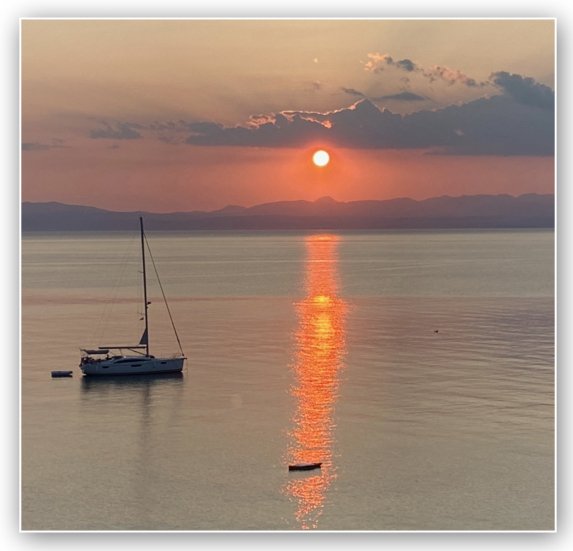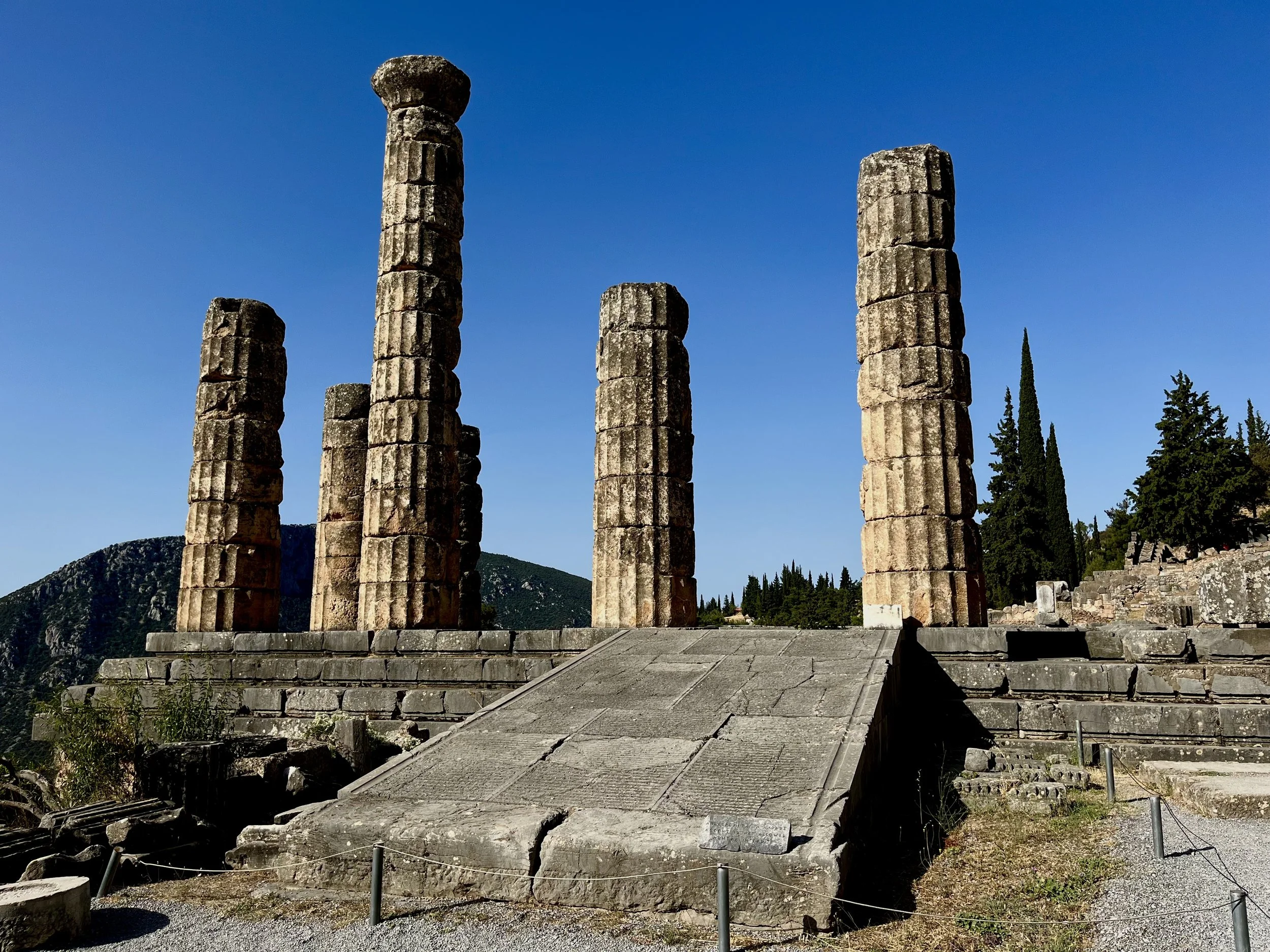Journey to the center of the world
At just over 8,000 feet, Mount Parnassus is one of the tallest peaks in Greece. In winter it’s a popular ski destination and only about a 2 1/2 hour drive from Athens.
But long before the invention of skis, snowboards and modern highways, the mountain had a much more profound impact on the lives of the ancient Greeks. Like all pagans, they believed in the mystical power of the earth itself — anger the river and bring catastrophe on your village, please the volcano and experience good fortune and prosperity. They held the lofty peaks and gorges of Parnassus in particular reverence, and Delphi, situated on the mountain’s southern slopes, was basically ground-zero for Greek spiritual life — a deeply sacred place, and the sanctuary of the god Apollo.
The backstory goes something like this: Zeus released two eagles from opposite ends of the earth, and where they met was considered the center of the known world. Here lived a fearsome dragon named Python, who was slain by Apollo and cast into a fissure in the earth. The ancients built a temple to the god on the site where a priestess — the famous Oracle of Delphi (also known as the Sybil or Pythia) — reigned supreme.
Warriors, princes and kings from all over the Greek world made pilgrimages to the Oracle, in hopes of receiving her advice and wisdom on important matters, from battles to affairs of state. It was believed the Oracle, after breathing in the fumes from Python’s decomposing body, would sink into a trance, allowing her to channel the god and foresee one’s destiny.
The most important city states of the time built “Treasuries” along the Sacred Way leading up to the temple. These were elaborately decorated stone structures containing offerings to the god, including spoils from victorious battles, statues, works of art and other valuables. Today all that remain are the building foundations, although the Treasury of the Athenians has been partially restored.
As with all classical sites, Delphi was ravaged by invaders, earthquakes and time. Excavations began in the 19th century and now it’s possible to walk the same steps and stones as the ancient pilgrims, past the ruined columns, stoas and temple, and on to a beautifully preserved amphitheater. Further up is a stadium where the pan-Hellenic Pythian games, precursor to the Olympic games, were held every four years.
No visit to Delphi would be complete without checking out the excellent Delphi Archaeological Museum, just a short walk from the main entrance. It’s filled with statues and other precious artifacts that once stood in the various Treasuries, or adorned the building facades. I paid 12 Euros for admission to the site and that included access to the museum. A bargain, in my opinion.
About a half-mile down the road is another, smaller site — the Sanctuary of Athena Pronaea, with its famous circular temple known as the Tholos of Delphi. This temple style is unique (most are rectangular) and it’s one of the most photographed monuments in Greece.
Museum and Tholos of Delphi:
Between the main entrance and the Sanctuary of Athena Pronaea, easily overlooked on the side of the road, flows the Castalian Spring. Back in the day, pilgrims stopped here to cleanse themselves before consulting the Oracle, as did athletes competing in the Pythian Games. It’s a peaceful spot and an opportunity to splash pure mountain water on your skin after a hot couple of hours walking through the ruins — just as visitors to Delphi have done for thousands of years.
Ancient Delphi is right off the main road that runs from Arachova to the modern town of Delphi, where you’ll find plenty of restaurants and hotels. Perched on a cliff edge, the town overlooks a lush green valley carpeted with olive and cypress trees, and far away in the distance you can see the glistening blue Gulf of Corinth.
I was hoping to write a killer conclusion to this post but I really can’t top Matt Barrett’s from his Greece Travel Guide:
“In my opinion the oracle at Delphi poses an interesting question which every person should ask himself during the visit, unless he is just going there to see old buildings, or because it was on a list of somebody's list of things to do in Greece. Lets say that the oracle, whether it was the voice of Apollo or some spirit, actually spoke to the ancient Greeks for all those centuries and it was not some scam or a form of mass hysteria, but something which we don't understand because it follows different rules than those we have grown use to living on planet earth in the 20th century. If people actually did communicate with the God at this sacred spot is it likely that the spirit went away or died ? Did it get bored and pack up its holy baggage and move on to some other new sacred site like Sedona, Arizona, or whither away like fruit on a tree that goes unpicked? Or is it more likely that the God still goes on speaking and we mortals have lost our ability or desire to listen. Maybe there are people who still communicate with whatever spoke and perhaps continues to speak to mankind in Delphi. Maybe all it takes is an open mind and heart to hear a voice that for centuries distributed wisdom to mankind.
So if you go to Delphi listen with your heart. Someone or something may be talking to you.”















